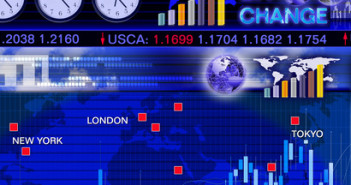The EUR remains under pressure as market sentiment continues in a “risk-off†mode as the IMF report is having more of an impact on the currency than the news coming out of Greece. The IMF released their Global Finance Stability Report, (GFSR), where they showed concern that the Eurozone is exposed to a “downward spiral of capital flight, breakup fears and economic declineâ€. Â
The report also mentioned that risks to financial stability have increased since April causing confidence in the global financial system to become very fragile. Â This is nothing new, however seeing it in print has given traders pause regarding adding risk to their portfolio.
The report also mentioned that capital outflow has increased as the crisis has intensified. Â The IMF also lowered estimates of global GDP to 3.3% for this year and 3.6% for 2013.
As far as Greece is concerned, German Chancellor Merkel was in Greece yesterday endorsing the efforts of Greek Prime Minister Samaras as European Finance Chiefs indicated that Greece will be getting their next aid payment. Â The Troika will return to Greece this week to review the latest budget cuts that the Greek government has made.
The visit by Merkel gave indication that Germany is willing to support the effort Greece has made and that they will support the new financial package as long as Greece continues to toe the line when it comes to the decisions that have been made by the Troika. Â The next payment that wil be made is due to come in November. Â The Greek populace was not as happy to see Chancellor Merkel as Prime Minister Samaras was. Â There were many protests by thousands of Greek citizens as they tend to blame Merkel for her role in the problems of Greece.
The good Greek news did not counter the IMF news and sellers of the EUR have targeted the 1.2800 level for the near term in EUR trading.  The markets are still waiting for at decision by Spain as to “when†not “if†they will ask for financing help.  Some “good†economic news out of the Eurozone has seen Italian industrial production rise in August, something that was not expected.  Italian industrial production rose 1.7% from July.  The forecast had been for a decline of 0.5%.  This unexpected news saw the EUR rise from its overnight low of 1.2835 to the 1.2870 range where it is currently trading at 5:00 am EST.
In other currency news, the AUD has traded higher despite the “risk-off†attitude as the government sold A$3.25 billion of bonds that will expire in 2029.  The yield on the bonds, 3.595% is considered low by Australian standards, but is rather high by international standards for AAA rated sovereign debt.  Adding to the positive AUD feeling, Westpac Consumer Confidence rose 1.0% in October and the Westpac Consumer Confidence Index improved to 99.2 from 98.2.  This move brought the AUD through the 1.0225 level and now the currency focuses on the 1.0250 resistance level.
Another of the commodity currencies, USD/CAD has failed at the .9805 level and has retreated back towards .9780. Â A break of .9775 sets the target at .9740.
The FED releases their Beige Book Economic Survey today, and given the good news last week on payroll there is speculation that the “Book†could be positive for the US economy.
The EUR should remain in the 1.2835 – 1.2900 trading range for the day as there are now surprises expected today.
Asian and European equity markets are lower this morning and in overnight trading and DOW Futures are negative as well, indicating a lower start to the US equity markets.
Further reading:Â Spanish Crisis: Yields Key to Bailout Request



